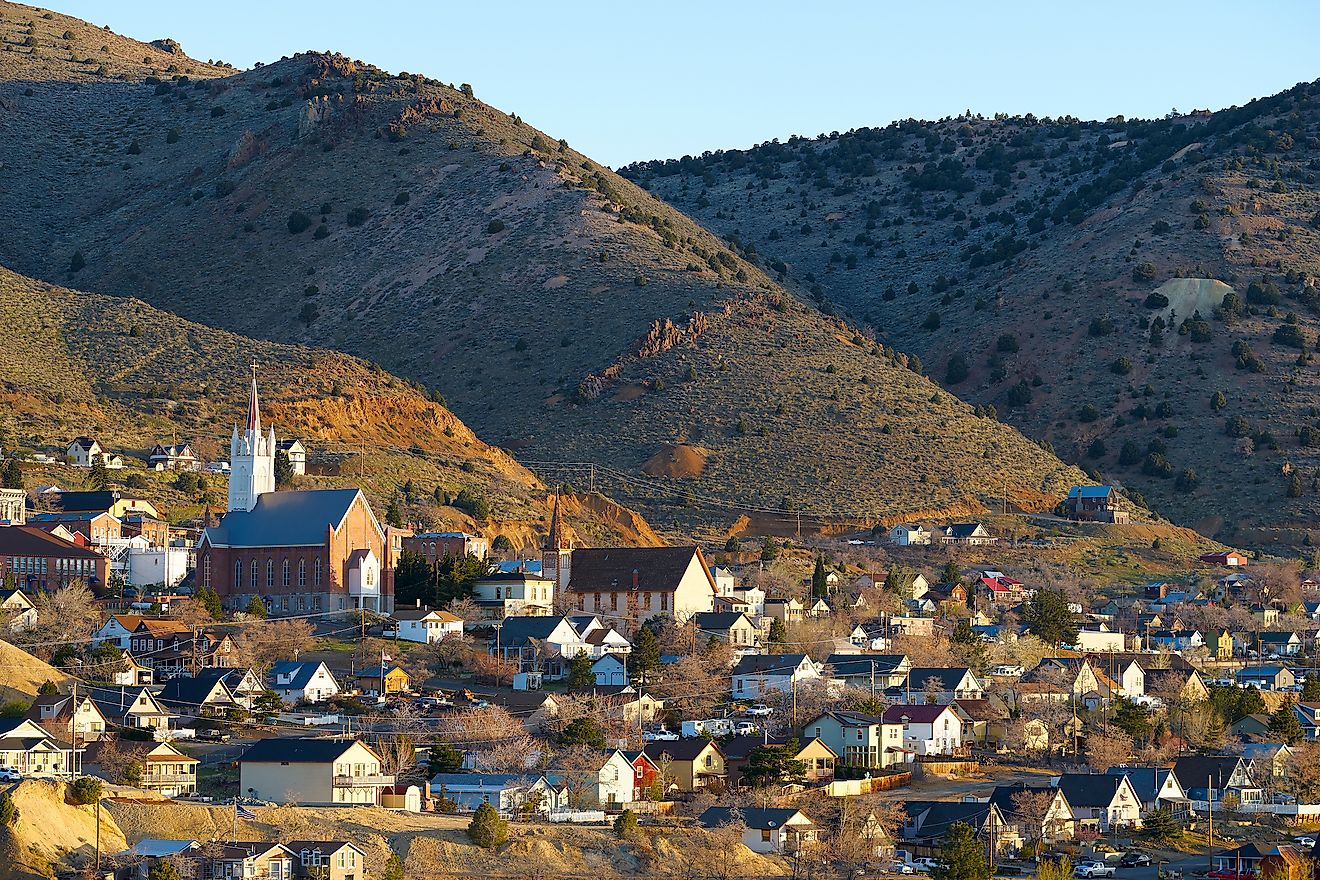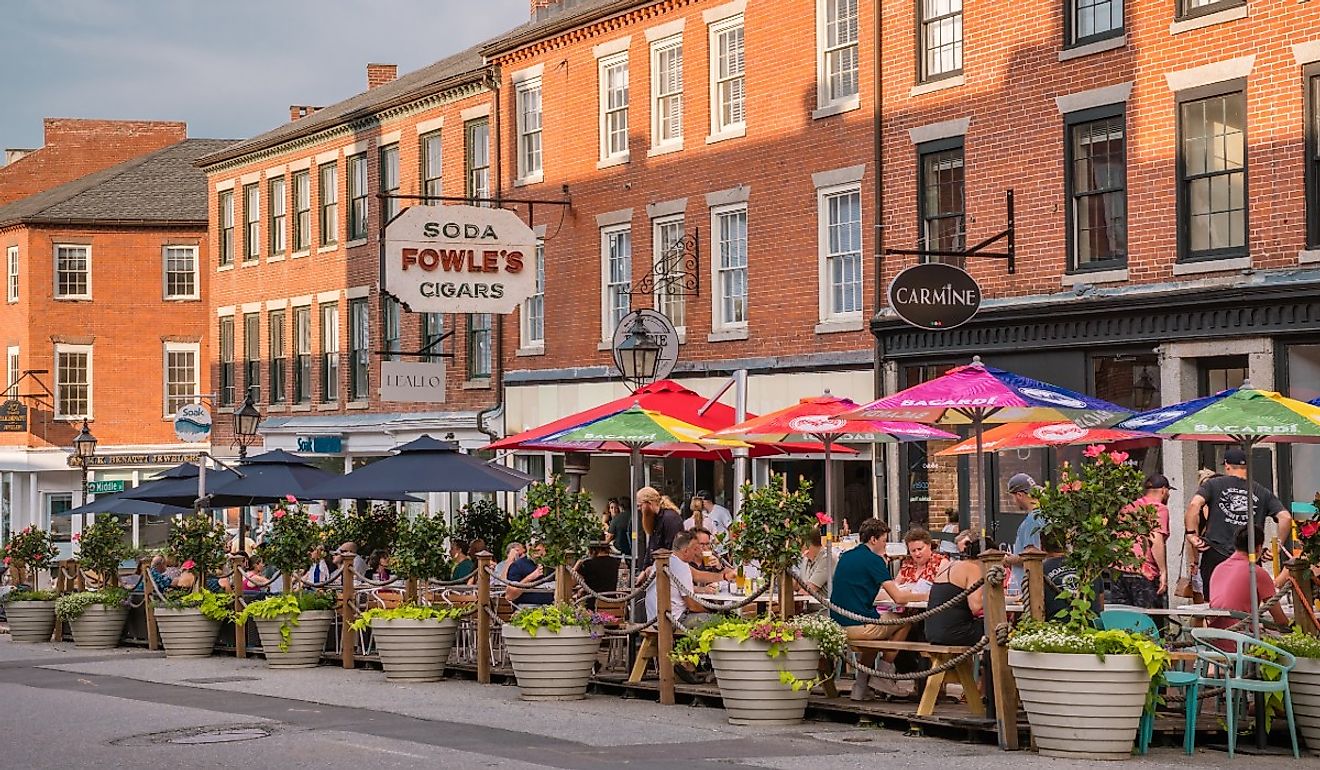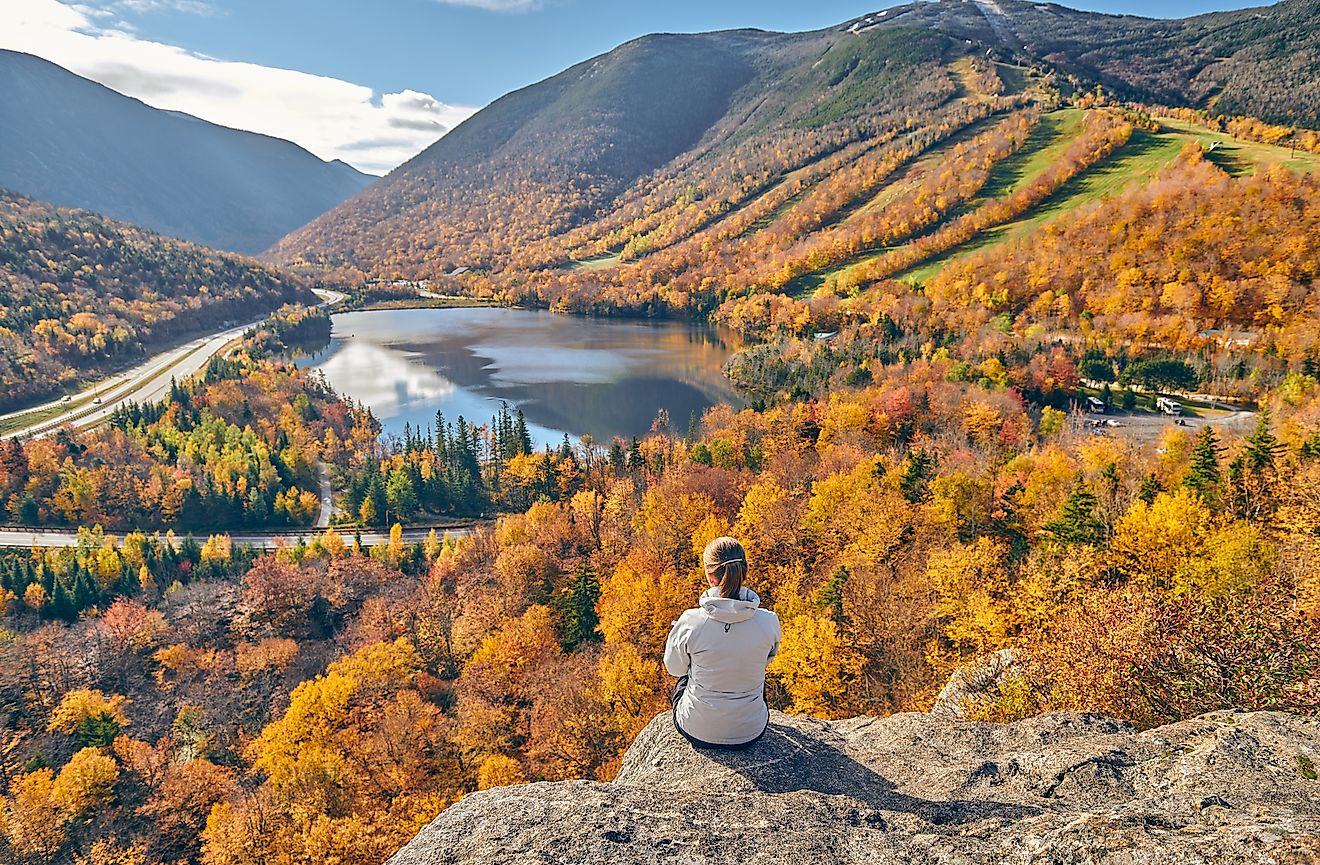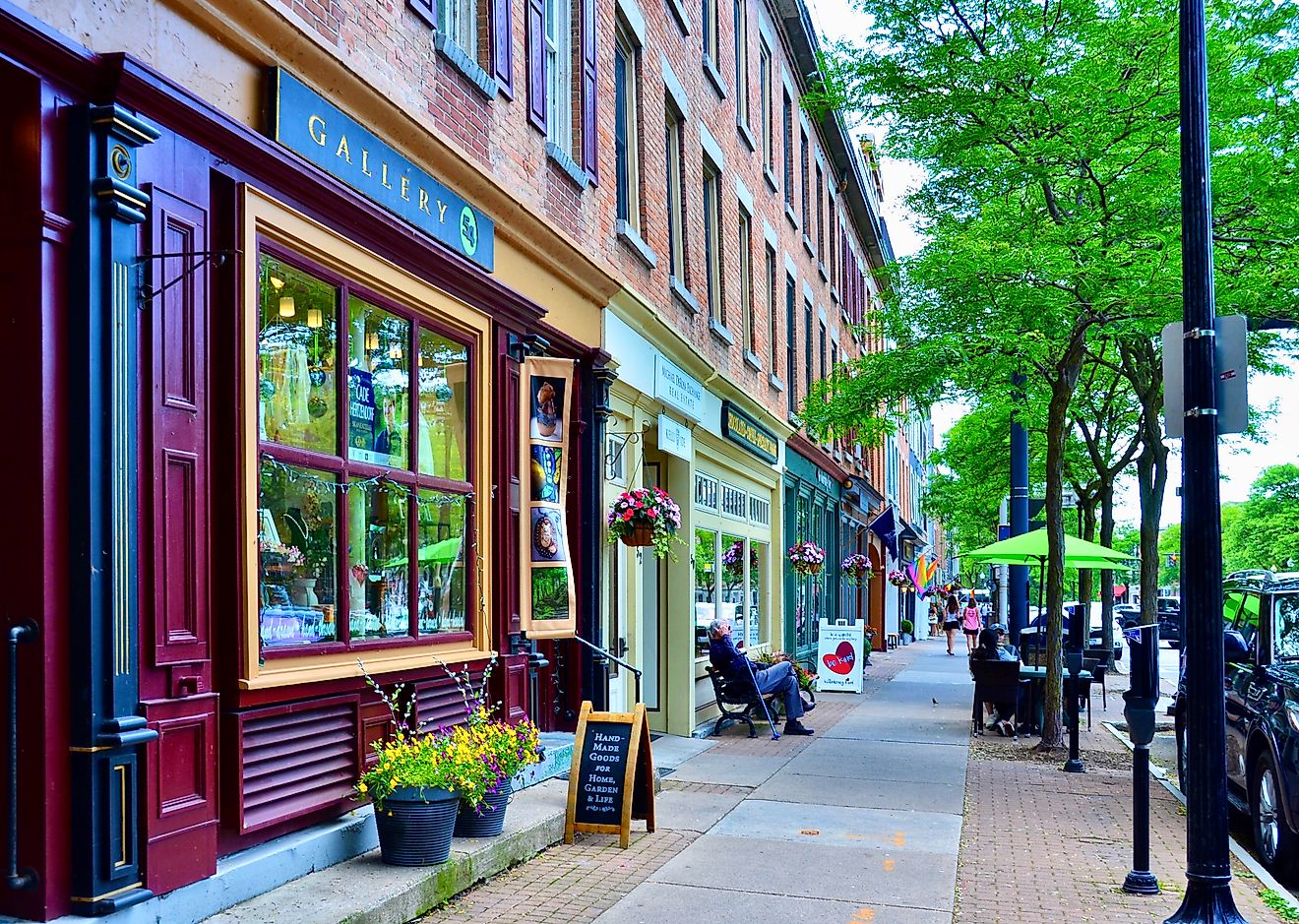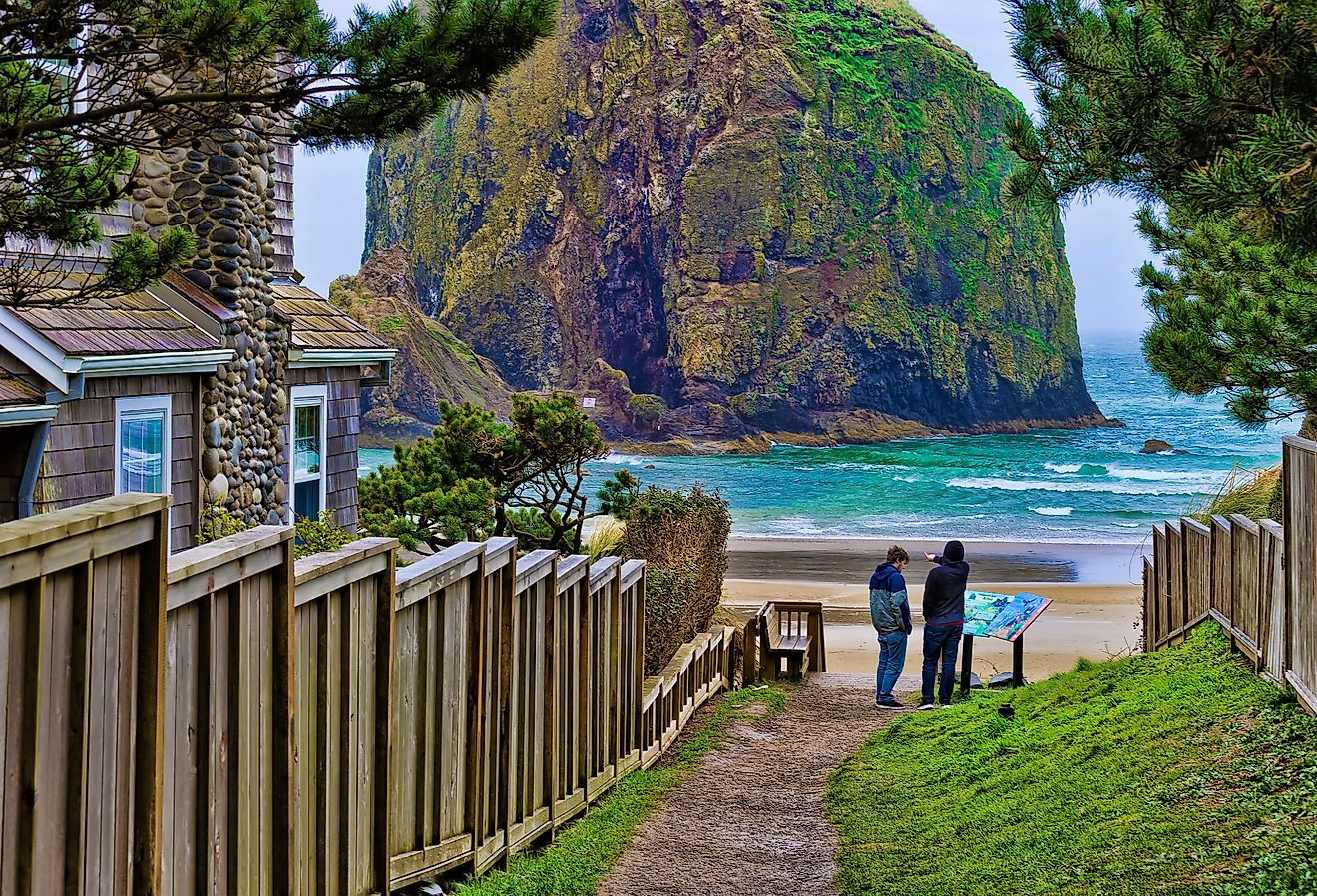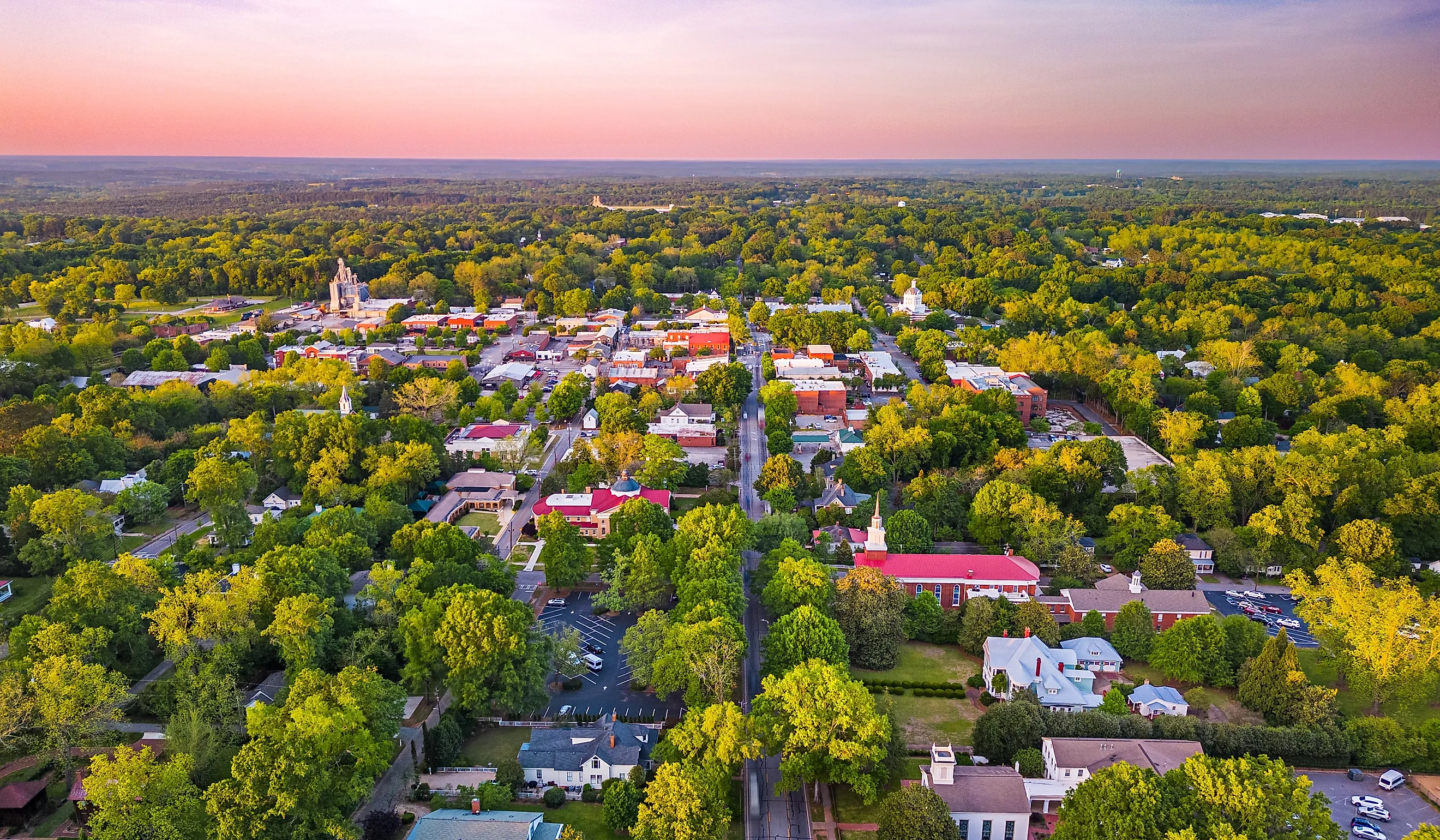
7 Nicest Small Towns In Georgia
Peach-skinned postcards and Hollywood backlots barely hint at Georgia’s deeper trick: it folds half the South’s story into villages the size of a high-school crowd.
This tour isn’t a syrupy ode to "small-town charm." It’s a ledger of living artifacts. Together, these places prove that the state’s real capital of hospitality is movable, and usually announced by the lonely blink of a crossing signal long after Atlanta’s last MARTA train has called it a night.
Blue Ridge
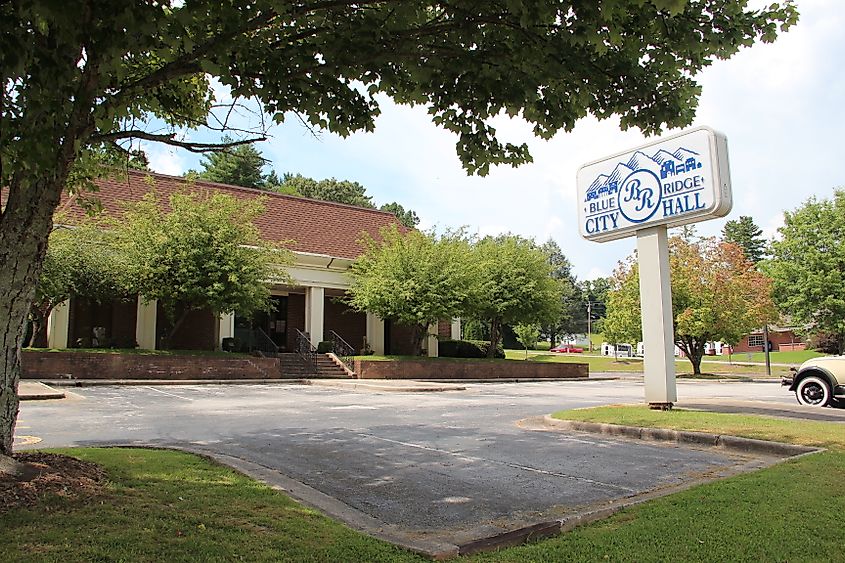
Blue Ridge is one of the only places in the state where you can board a historic train, buy fine art, and sample locally grown wine, all within walking distance. What sets the town apart is its deliberate balance of tourism and preservation: it’s the seat of Fannin County but has fewer than 1,500 residents. Blue Ridge is also home to one of the oldest trout hatcheries in the Southeast and sits near the southern terminus of the Appalachian Trail. Despite its small size, it supports a functioning art center housed in a restored courthouse and remains a hub for regional artisans.
Visitors often begin with a ride on the Blue Ridge Scenic Railway, which runs vintage railcars along the Toccoa River to McCaysville. From there, it's common to walk to Harvest on Main, a local restaurant known for sourcing meat and vegetables from surrounding farms. The Blue Ridge Mountains Arts Association, located in the historic courthouse, hosts juried exhibitions and offers classes year-round. Just outside of town, Mercier Orchards operates a large market, bakery, and cidery.
Dahlonega
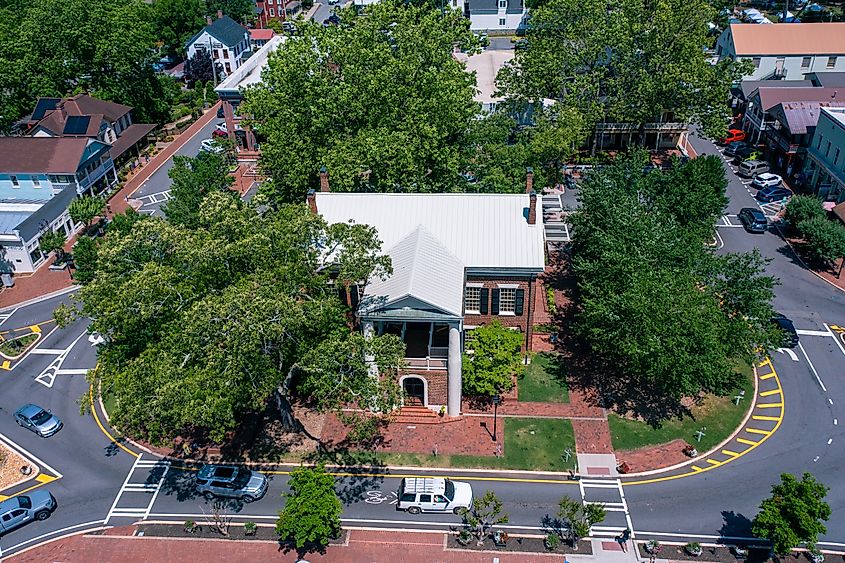
Dahlonega is the site of the first major U.S. gold rush, predating California by two decades. The town still uses the phrase "there’s gold in them thar hills," coined locally and later popularized nationwide. Its name comes from the Cherokee word for "yellow," a reference to the area’s mineral-rich terrain. The University of North Georgia’s main campus is located here, and its military program is one of the oldest in the country. Dahlonega also sits at the intersection of multiple wine trails and is part of the federally recognized Dahlonega Plateau AVA.
One of the central stops is the Dahlonega Gold Museum, located in the 1836 courthouse on the town square. For food, Shenanigans offers pub-style meals in a historic house just off the main drag. A short drive from downtown, Cane Creek Falls can be accessed via Camp Glisson, where public parking is allowed seasonally.
Madison
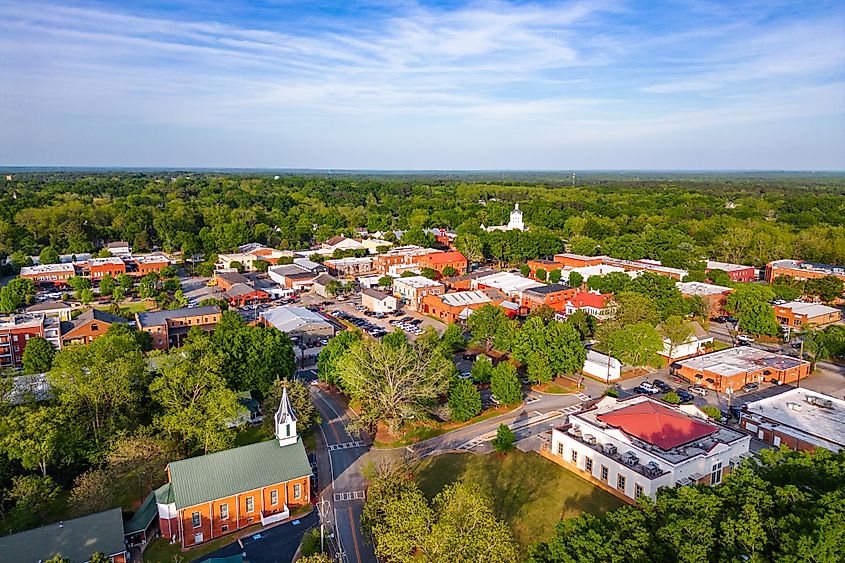
Madison is one of the few Georgia towns spared during Sherman’s March to the Sea, allegedly due to its architecture and the persuasion of pro-Union locals. As a result, it has the state’s largest collection of antebellum homes outside Savannah. The town also maintains strict historic preservation ordinances, which have kept commercial development in check for decades. Its residential streets are laid out in a grid that predates the Civil War and includes intact carriage houses, working gas lamps, and restored slave quarters used as outbuildings or museums.
Tourists often start at Heritage Hall, a Greek Revival home open for guided tours that include records of original occupants and enslaved workers. Town 220, located beside the James Madison Inn, serves dishes made from locally sourced ingredients and houses a private wine locker program. The Madison-Morgan Cultural Center, located in a Romanesque revival schoolhouse, functions as both a regional museum and a performing arts venue. For outdoor space, Madison Town Park offers walkable access to the square and frequently hosts events tied to the local farmers market and civic groups.
Senoia
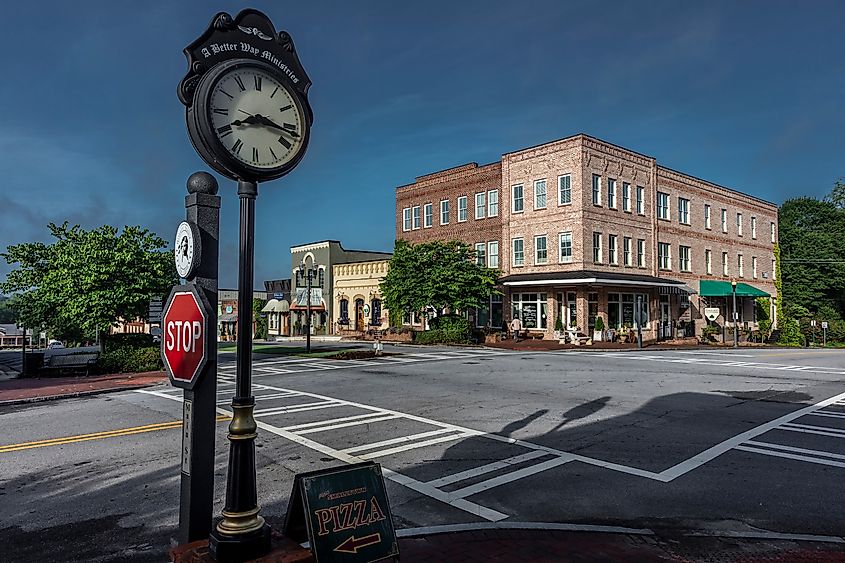
Senoia operates as both a working town and an active film set. Since 2011, it has served as a primary location for The Walking Dead, with entire blocks restored or reconstructed to suit the show’s long-term production needs. Multiple storefronts on Main Street are owned by Riverwood Studios affiliates. The town has adapted to this dual identity without becoming a theme park; it retains functioning municipal buildings and residential zoning directly adjacent to the commercial district. The film presence has increased tourism, but also allowed for small-scale infrastructure improvements funded through local revenue.
The Georgia Tour Company offers behind-the-scenes walking tours that include alleyways, rooftops, and filming interiors, all sanctioned by AMC and the city. For food, Bistro Hilary serves French-inspired dishes in a renovated 1890s storefront and requires reservations on weekends. The Senoia Area Historical Society Museum maintains an archive of early 20th-century town records and artifacts from the railroad and cotton eras. Visitors looking for green space use Marimac Lakes Park, which includes a stocked lake, walking trail, and ADA-accessible fishing piers.
Thomasville
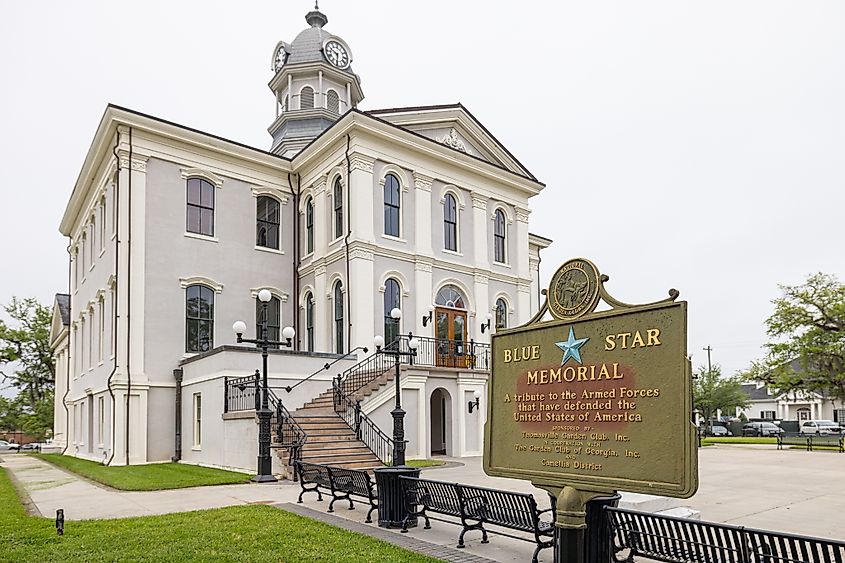
Thomasville was once known as the "Winter Resort of the South," a title it earned in the late 1800s when wealthy Northerners traveled there by rail to escape cold weather. Unlike other resort towns, Thomasville attracted year-round residents who built permanent homes, resulting in a street grid lined with large estates, carriage houses, and longleaf pine stands. The town also has one of the few remaining public oak trees in Georgia that’s over 330 years old, the Big Oak, which is registered with the Live Oak Society.
The Jack Hadley Black History Museum contains nearly 5,000 items related to Thomas County’s African American history, including Tuskegee Airmen memorabilia and Jim Crow-era documents. Sweet Grass Dairy Cheese Shop serves housemade cheeses sourced from its own Thomasville creamery, alongside local beer and wine. The Thomasville History Center occupies a seven-acre campus that includes the restored 1870 Smith Homestead and an 1896 bowling alley. For public space, Paradise Park offers walking paths under mature oaks and regularly hosts civic-sponsored events.
St. Marys
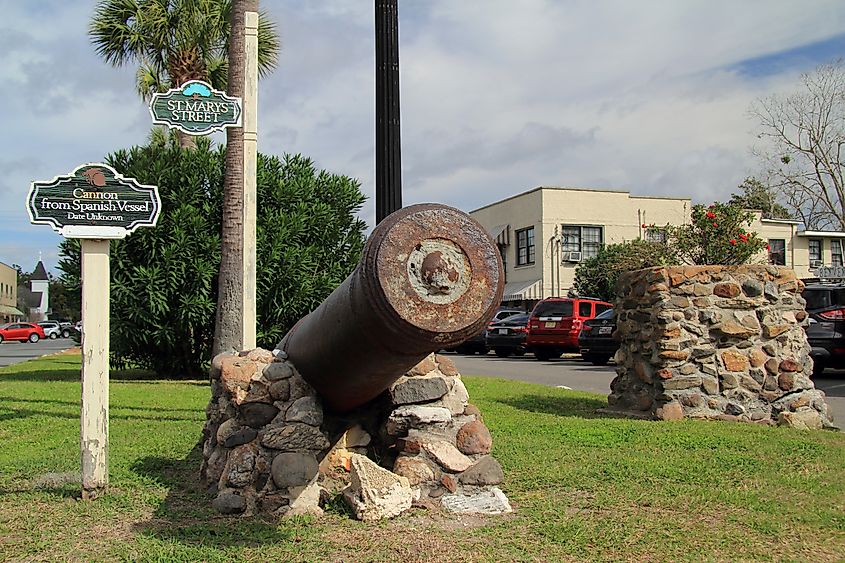
St. Marys is the only town in Georgia with a federally operated ferry to a national seashore, Cumberland Island. The city’s street layout still follows the 1787 Spanish land grant pattern, and its waterfront contains remnants of naval and commercial boatyards active through the 20th century. Submariners stationed at nearby Kings Bay Naval Base often retire in town, and many operate small businesses. The town also holds one of the oldest continuously operating hotels in the state, the Riverview Hotel, established in 1916.
Cumberland Island National Seashore Visitor Center serves as the ferry terminal and houses exhibits on the island’s natural and industrial history. The St. Mary's Submarine Museum features Cold War-era naval equipment and a working periscope, operated by volunteers including retired Navy personnel. Howard Gilman Memorial Park is used by locals for small concerts, weddings, and festivals, and includes a walking pier built over the St. Mary's River.
Tybee Island
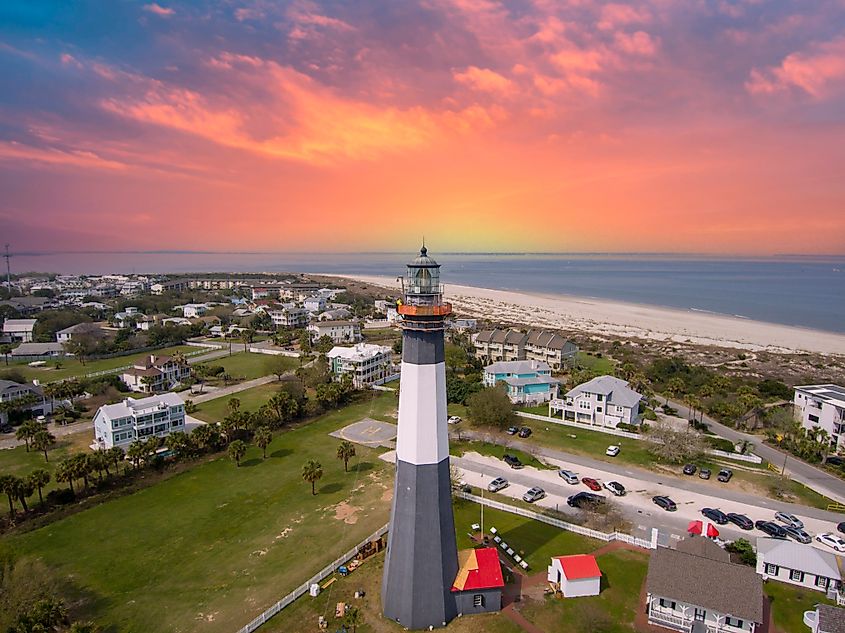
Tybee Island operates as both a barrier island and an incorporated city, making it one of the few Georgia coastal communities with full local control over its zoning, beaches, and historic preservation. It also maintains one of the state’s oldest continually used lighthouses, first constructed in 1736 and rebuilt in 1867, alongside intact keeper’s quarters. Tybee is the easternmost point in Georgia and regularly experiences different tide cycles and weather patterns than mainland Savannah, just 18 miles inland.
The Tybee Island Light Station and Museum allows visitors to climb 178 steps and includes exhibits on Civil War coastal defense. The Crab Shack, built over a former fish camp, serves a low-country boil at outdoor tables placed over salt marshes. The Tybee Post Theater, a converted military movie house from the Fort Screven era, now programs live music and independent films. For open space, Jaycee Park includes ball fields, a butterfly garden, and access to a public trail network that runs behind residential neighborhoods.
Georgia’s smallest municipal dots prove size shrinks nothing but traffic. In Blue Ridge, metal wheels still echo frontier ambitions; Dahlonega bottles auriferous soil; Madison guards antebellum blueprints; Senoia turns camera time into civic capital; Thomasville cultivates pine-scented sophistication; St. Marys ferries history across brackish water; Tybee Island keeps one eye on storms and another on its Fresnel flame. Together they archive the state’s past while drafting tomorrow’s visitor ledger entries.
